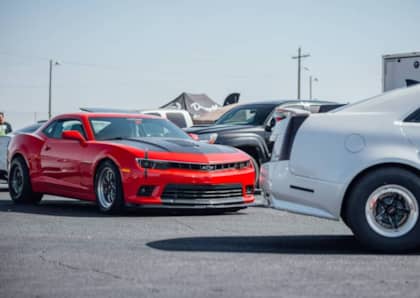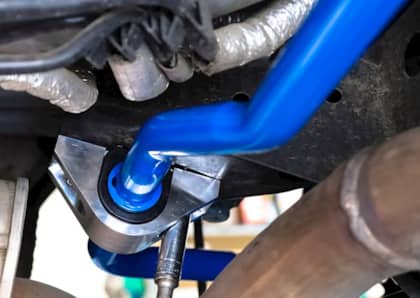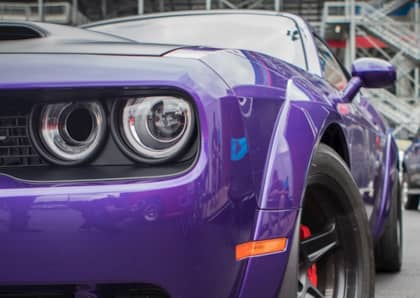Safety First: Your Roll Cage Questions Answered
So, you’re getting faster and your car is pounding out all the horsepowers. You want to hit the races to see what it can really do, but to qualify for certain types of track runs, you may need to install a roll cage. That’s right: it’s time to go full race car.
Sure, you need to pass tech to put your car to the test on an open course, but more importantly, a roll cage will save your life. And yes, a life-threatening accident really could happen to you. Though a quality roll cage will devour a few paychecks, the “I just want to find the cheapest option to get me through tech” mentality isn’t in your best interest. Perhaps considering the structural benefits of adding roll cage reinforcement will help dull the pain of the expense. Your car will feel more solid and handling during launches or tight turns will improve with less twisting of the chassis. The rigidity is dependent on the overall cage design, so you could opt for little to no wiggle room. A good roll cage also helps to preserve the chassis in cars that take a severe beating in competition, like rally cars for instance.

To give you a little guidance in what to look for when considering the best roll cage for your application, we talked to an expert in the business, Ryan Thompson, who built Thompson Racing Fabrication into a life-saving business by fabricating custom roll cages for several types of motorsports. We’ll begin by weighing in on which tubing types are best.
Metal to Metal
As technology advances, more successful chemical element combinations prove even stronger and lighter than before. If given a choice, Ryan opts to work with Docol R8. Docol R8 was designed in Sweden, but it's specifically engineered to be an automotive steel, even more specifically, a motorsports steel. “The way it functions in a race car is just outstanding because that’s what it’s engineered for,” he said. It's stronger than chromoly, doesn't crack, and it welds like any mild steel. Most racing sanctions allow the use of Docol R8, with several accepting reduced tubing thickness “For rally cars, we were able to drop 20% of the cage weight while mathematically still having a cage that's still 25% stronger than what we previously used, Ryan explained. “Docol R8 can take 30 pounds out of a rally car.”
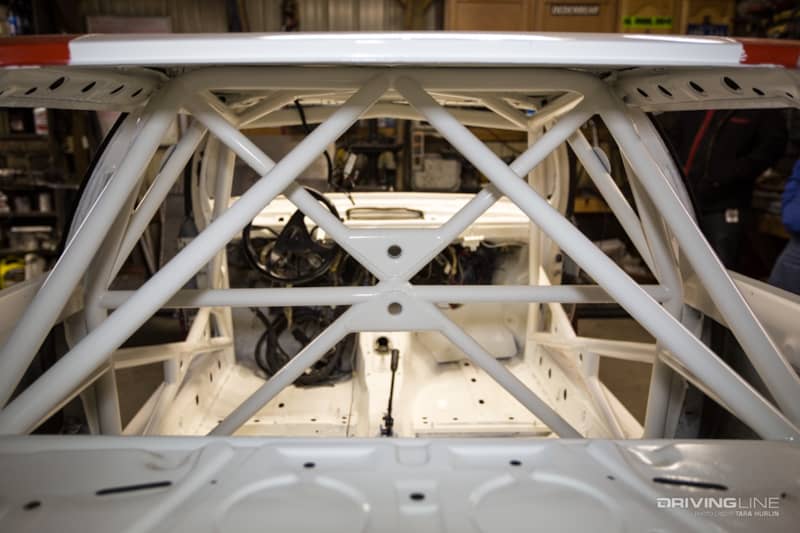
Another option you may have heard of is 4130 Chromoly tubing, but I’ll begin with a word of caution: Chromoly tends to crack and fail, especially if the welds are weak. It was developed by the U.S. Military for aircraft, so when welded properly, it is exceptionally strong. This is one material that must be TIG welded for strength. For added safety measures, Chromoly should also be post-weld heat-treated to reduce residual stresses and strengthen the material. Despite the complexity of the process, Chromoly is sought after due to it being extremely lightweight. For example, a 6-pt Chromoly rollbar is 15-20lbs lighter than the same mild steel rollbar.
Drawn Over Mandrel (DOM) steel tubing may be the most recognized option on this list. It starts as a cold-rolled Electronic Resistance Welded (ERW) tube. The ERW is drawn through a die and over the sides of a mandrel. Multiple passes further form and refine the finish and mechanical properties necessary for its final application, in this case, a roll cage. (Duh.) It is the most affordable option, but not the lightest or strongest.
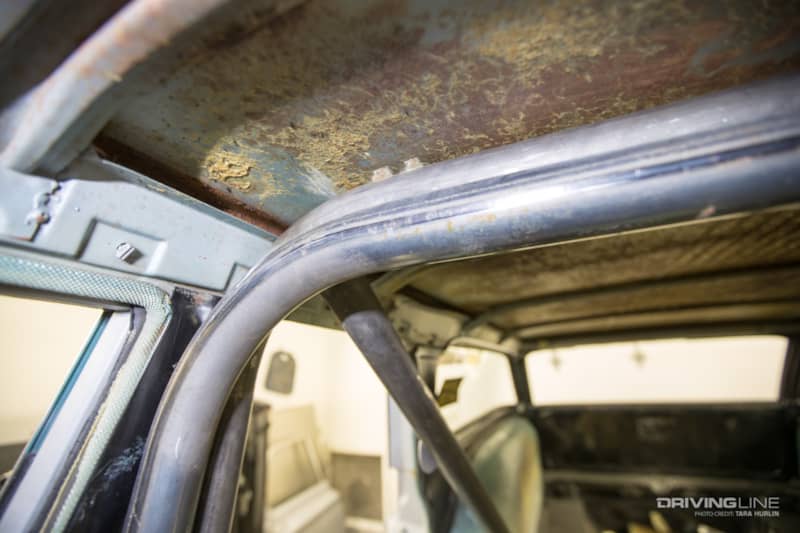
It’s important to note that ERW bars are the weakest link. Er, tube. It’s essentially what we know as “DOM tubing” minus the milling process. What’s the big deal, you ask? Well, ERW bars are essentially sheet metal bent into a tube form and then welded down the center. The photo above shows an ERW bar from a universal kit leaning against a custom-installed DOM bar. See the dark grey weld line? That weld is a major breaking point, but the DOM process chemically alters and molds the metal’s compounds together for a much safer product. Most sanctioning bodies no longer allow ERW in roll cages, but Ryan says he’s still cutting it out of cars.
MIG or TIG?
Ah, the MIG vs. TIG debate. Either option is an acceptable route for any skilled welder, but Ryan gave some excellent points to consider according to what works for him. Each method has its pros and cons. TIG welding leads to more consistent results. A foot pedal or thumb control gives an infinite amount of power output adjustability for evenly-heated welds. The ability to hand-feed wire allows the welding surface to fully get up to temp before starting a bead, so the fusion is even throughout the entire line.
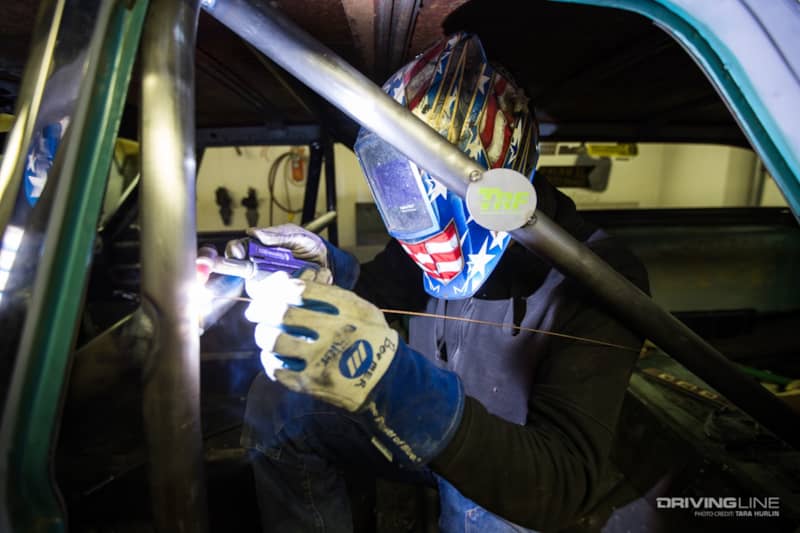
With MIG, you set the amperage or voltage, which are directly related, and then you set the output and the wire feed speed before pulling a trigger to initiate the weld. When the first bead starts, the base metal has yet to heat up, but the machine is still jamming wire through. As a result, the first bead is typically taller and not as solidly fused to the metal, but as you continue to run your line, the bead gets lower and lower as the base material heats up. The end of each weld will be stronger than the starting point.
Here's where welding becomes difficult in a roll cage: under the very best circumstances, the welder is stopping and starting in every joint two or three, even four times to re-position themselves. Four stops equate to four weak spots when using a MIG. With a TIG, the welder can stop and take a moment to reposition, then go back to that same spot, wait for it to heat up, and continue the weld. An exceptionally talented person will keep that optimum penetration all the way around each tube.
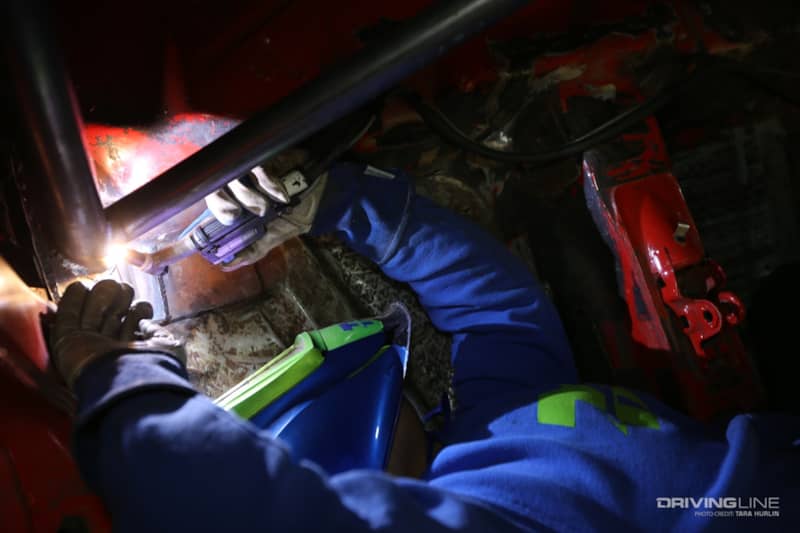
When it comes to sheet metal, a MIG welder has the advantage of its self-feeding capabilities. “When a base plate is an eighth of an inch thick and the sheet metal in the car we’re attaching it to is only a 16th of an inch or less, it’s challenging to feed filler material fast enough by hand for TIG welding,” Ryan explained. “There’s more chance of blowing a hole through the floor.” Whichever route is taken, the key to safe welds is the skill and experience of the welder and the quality of his or her equipment. So, perhaps your beer-drinking neighbor who only tack welds yard art isn't the best option.
What Could Go Wrong?
Now, after all that welding talk you may be wondering about bolt-in cages, so I’ll give them a brief mention as to not leave you hanging. Most motorsports competitors will tell you that welding creates a much safer cage that also adds far more rigidity to the shell. That makes sense since the majority of cages are welded to suspension pick up points and directly to the car’s pillars. Bolt-in cages are known to fail, especially if a car is T-boned or the bolt points punch through the floor in a rollover. Scary stuff. That said, let’s turn our focus back to weld-in cages.
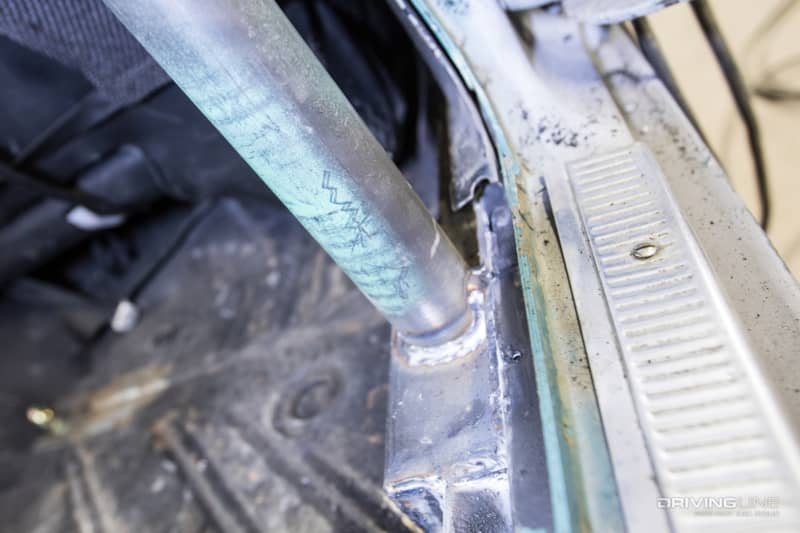
We can’t get too heavy into the design specifics of a roll cage since it strictly depends on the vehicle’s overall design and your taste in racecars. Instead, for the sake of not writing a book, I’ll touch on the common cage building mistakes that Ryan has seen come through his shop doors.
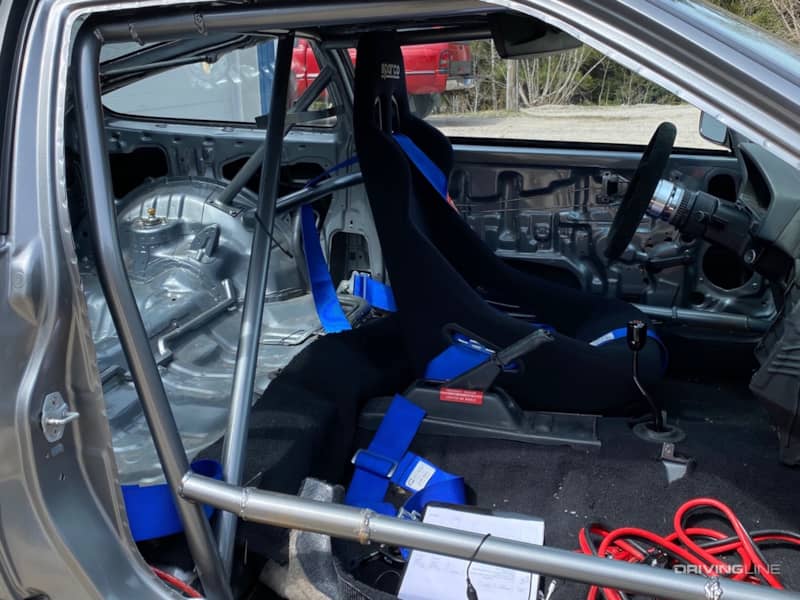
Poor and incomplete welds and poor fitment—for the car and the driver—are the most common. Some folks don't have the tools or experience to weld all the joints fully. Those with less experience may opt to purchase a universal, weld-together kit, which doesn’t fit nearly as tight to the car as a custom build. What’s even more dangerous are misaligned tubing intersections or a geometry that when it fails, it could be fatal. Ryan has ripped cages out of cars that were more likely to hurt the driver than help in a crash. “Understanding the physics of what you're building and how it's going to function in a crash is key to optimum safety,” he said. “I once had a car with fitment so poor that an adult could put a leg between the A-pillar and the bar.”
On the Road to Safety
If you’re planning on finding a shop for the install, look into the company per usual, but also know that choosing a shop that has experience in building cages for your specific motorsport will give you a much higher likelihood that your vehicle will pass tech with flying colors. Every sanctioning body and often every class within that sanction has different regulations on safety equipment, right down to the tube thickness, the mounting points (usually 4-pt, 6-pt, 10-pt or 12-pt), bar width and spacing, and the amount of bars used for bracing and where the bars are placed. To make things more confusing, the rules change regularly, so be sure to check your sanctioning body’s current regulations. After you establish what the exact requirements are for your application, you can make the car as safe as you want it to be with a custom build.
Don't be afraid to travel for a good roll cage, especially if you plan to drive halfway across the country six different times next year to race your car. Installing a cage is a big investment. It’s one of the most important parts in any race car because it protects the most valuable thing in the vehicle—the driver.
Already set with a roll cage, but itching for more upgrades? Check out seven more must-have race car mods.




